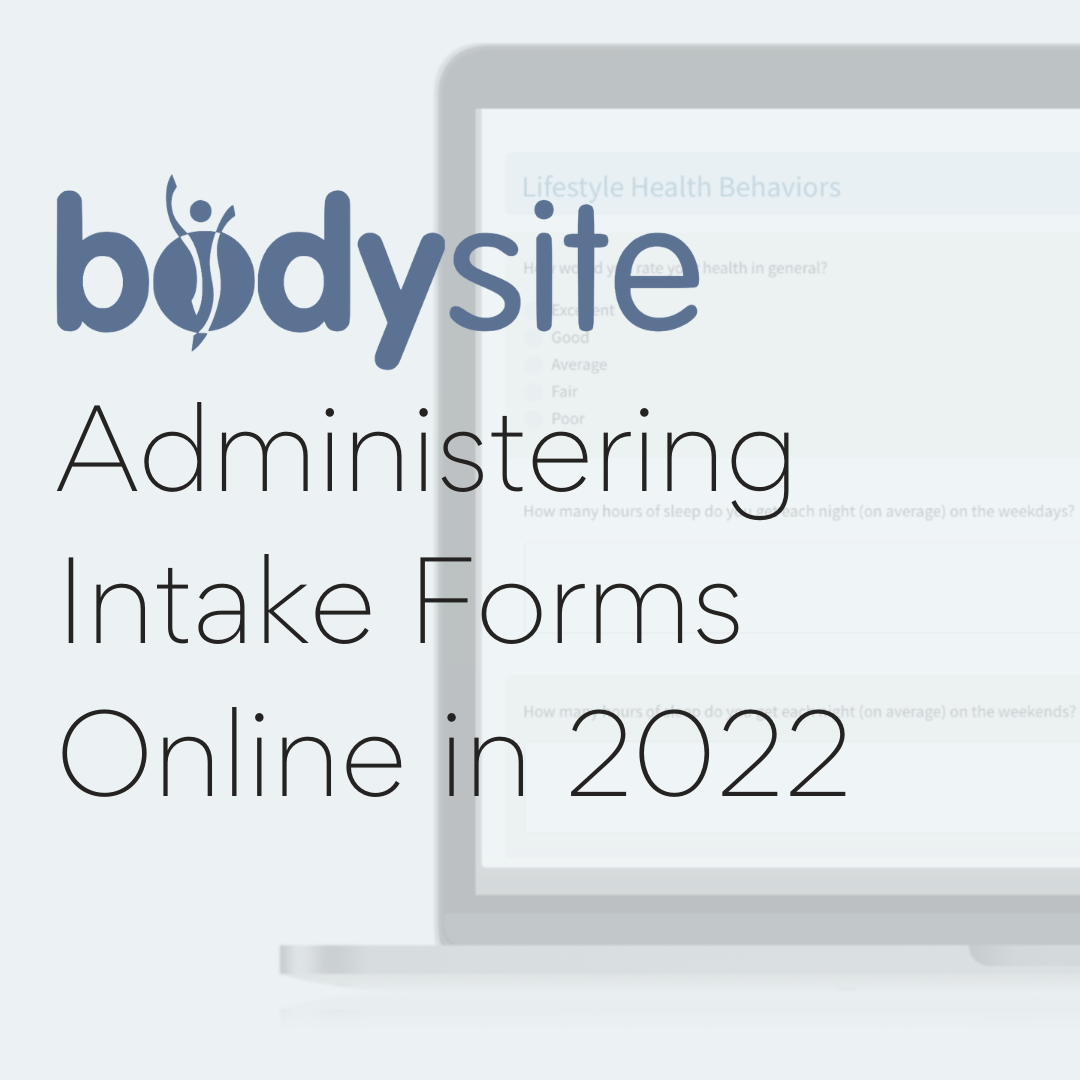Administering Intake Forms Online: Tips for 2022

Intake forms are simple but powerful tools that allow providers to take a snapshot of a patient’s health during their initial visit, and over time.
As our world continues to advance technologically, it’s becoming less of a luxury and more of a necessity to offer digital versions of traditional tools to your patients. Some examples include…
- Telehealth visits in between office visits
- Automated patient education software that can bring patient educational handouts to life
- Digital/interactive intake forms as opposed to pen and paper
As you transition to offering intake forms digitally, it’s important to consider not just what questions you should ask but also how you are distributing, positioning and tracking forms. Here are some tips for effectively conducting intake forms online:
Remaining HIPAA Compliant
Ensuring privacy is an essential part of any intake form but traditional forms present legitimate risks to patient information. Furthermore, traditional forms prohibit the patient to express their concerns in great detail.
For example, emailing patients a PDF to fill out isn’t completely private. When patients attempt to submit their document to you via email, there is a risk that the patient’s protected health information (PHI) gets sent to the incorrect recipient. Even if it’s the patient’s error, you don’t want to facilitate that problem.
Pen and paper forms aren’t impervious either; in fact, they are one of the worst methods. Forms being filled out at the waiting room of your office are out in the open for other individuals to view.
The most secure format for an intake form is inside a cloud-based, password-secured software. By choosing this format, the patient has a private and straightforward channel to express their concerns from start to finish. When the patient intake form is complete, their results will instantly be submitted to the provider with no risk of other parties accessing this information.
Utilize An Interactive Tool
Interactive tools increase patient engagement when compared to static forms. Using a tool that allows the patient to click on answer choices, type in-depth responses and allows the patient to easily and digitally move from question to question, helps the patient to stay focused and answer more honestly.
Traditional forms can often reduce the likelihood that patients will express their concerns in great detail. If a patient has technical issues filling out a static file on their computer, they may be less likely to answer thoughtfully.
Additionally, people are often able to provide greater detail on their keyboard and in the comfort of their home than they would in the confined spaces offered on of a physical piece of paper, sitting next to their neighbor in the waiting room or filling out a rigid online form.
Customize Your Forms
When creating your form, it’s a good idea to vary the types of answers that patients can give in response to questions. For example, follow up your “yes and no” questions with a text box format.
By varying the types of questions you can prevent patients from assuming the answer to the next question and therefore answering incorrectly answering. In other words, if a patient is likely to answer “no” to a long series of questions, they may be inclined to answer “no” to a question that they should say “yes” to.
Additionally, by customizing your forms you can tap into questions that are specific to your specific care protocols and expertise. Oftentimes, using a generic template can lead to providers failing to screen for issues that they need to know about, such as mental health concerns, additional patient history or even prompts that ask the patient open-ended questions which might reveal a lot about the patient: “is there anything else you’d like your provider to know?
Track Completion
Having one specific location for your patients’ intake forms is the most efficient way to keep patient records up to date. On the other hand, creating multiple channels and inputs for receiving intake forms is a recipe for disaster for you, your patients and your staff.
If possible, utilize a system that notifies you once the patient has completed their intake form so you can review their answers as soon as possible.
In the BodySite platform, patients can be given tasks to complete for any to-do, including completing an intake form that you assign to them. The option to allow patients to complete past due tasks is also available.
Re-Assess Regularly
Finally, ensure that you are continuing to ask your patients follow up questions over time. Existing patients need to be checked up on as well.
With the ability to customize forms, it’s a good practice to utilize forms for specific intervals of time with your patient. For example, a new patient intake form, a 6-month check in and a 1-year check in.
This will help to ensure that you’re always up to date and you’re not missing anything during your visits or in between visits. And depending on your business model, the form and the output from it, may provide you with an opportunity to enroll patients in a new protocol, program or supplement regime that you can monetize for your practice.
If you’re looking for a HIPAA-compliant telehealth solution that allows you to customize and distribute intake forms and educate your patients, check out BodySite.com. If you’re not already using BodySite, click here to claim your 30-day free trial.
If you’re already a client of BodySite, you can find the intake form builder and template intake forms under Libraries > Forms/Surveys. Learn more about how to use our questionnaire and intake form builder at this link or call us at 561-247-3839 if you need additional assistance.
